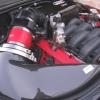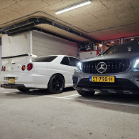JUN SR20 S15 (300kw @ wheels mild tune) FS (aussie spec)
Announcements
-
Similar Content
-
Latest Posts
-
G'day all, I have drilled and tapped the hole for the relocation of the timing belt tensioner. That was straight forward. I'm unsure if I need to also put another hole for the smaller stud that the spring behind the tensioner catches on (this is how it seems to work in its original spot). Or do you not use the spring behind it and just torque it down? Thanks in advance, I did a search but couldn't find anything related and it doesn't mention it in the rb30det sau guide.
-
By DanielStone · Posted
Hi All, just thought I would provide an update as I know smooth (Matt) was on this forum from 2003. my brother Matthew passed away end of may 2024 at the age of 41 from liver failure. I am not sure how many of his original team krazy friends are still on here or active but thought it reasonable to let the forum know. if you have any photos or pictures it would be great if you could share them. it took me a while to work out he was active on here. thanks so much -
By DanielStone · Posted
Hi All, just thought I would provide an update as I know smooth (Matt) was on this forum from 2003. my brother Matthew passed away end of may 2024 at the age of 41 from liver failure. I am not sure how many of his original team krazy friends are still on here or active but thought it reasonable to let the forum know. if you have any photos or pictures it would be great if you could share them. it took me a while to work out he was active on here. thanks so much -
😜 hopefully we get this instead of a new R36 GTR due to recent financial problems at Nissan. Nismo to sell a complete kit with RB26 and driveline. All starts making sense (ok maybe not) once the Nissan Leaf's (Leaves?) with stuffed EV motors/batteries hit the market cheap
-
Hi guys , have had allot of time for SAU and has helped me out heaps in the past so I thought I would give it a go , I have my QM1 white NUR for sale 1 of 156 examples built by Nissan. Serious personal messages please if interested and details will be provided , asking 500k
-




Recommended Posts